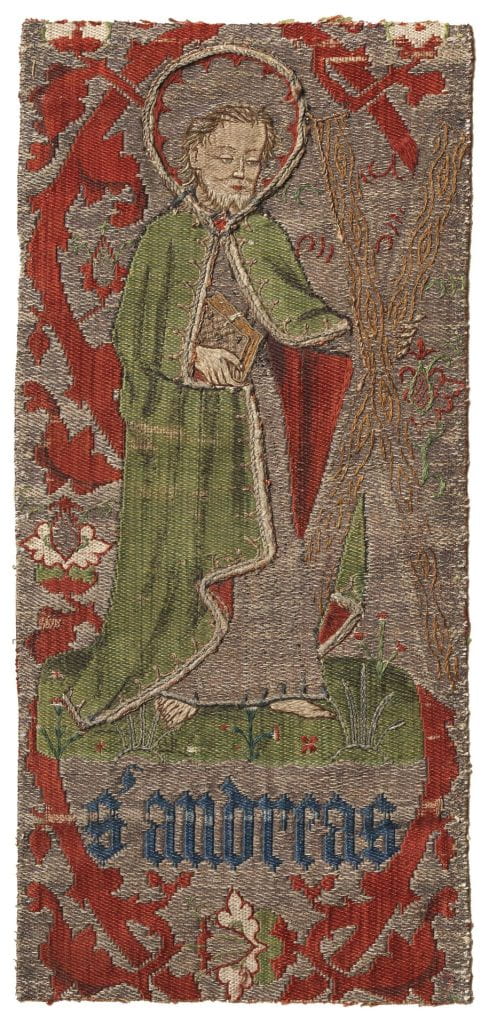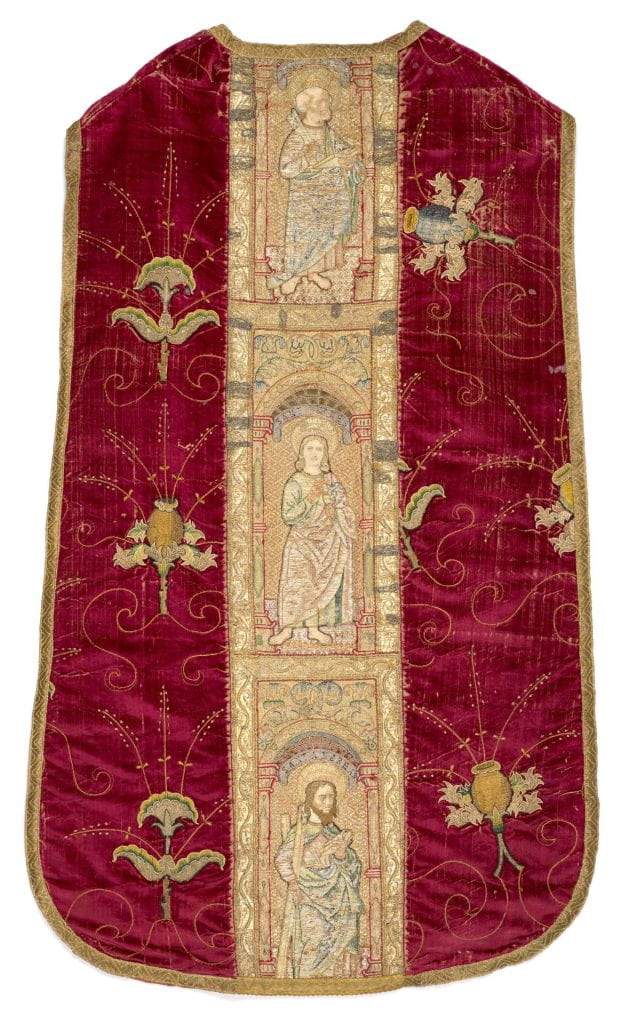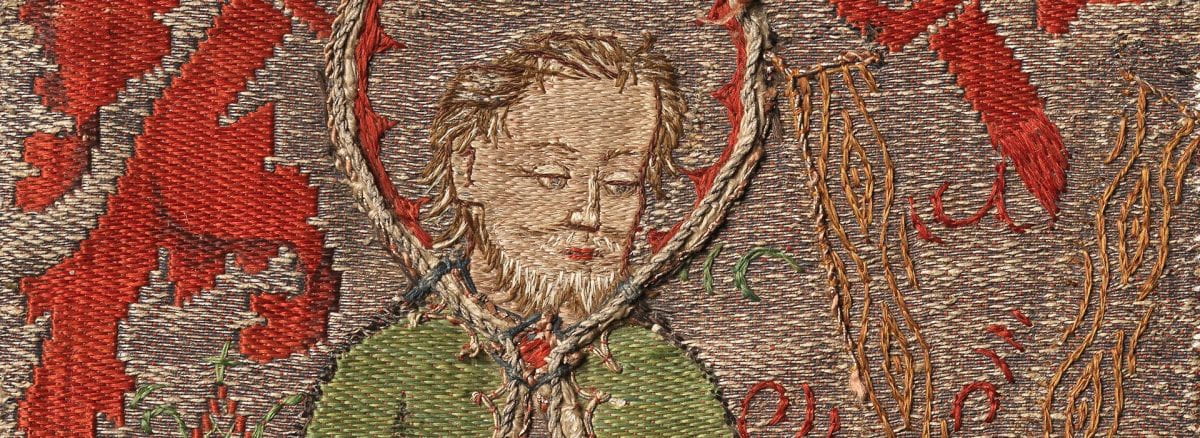In medieval Europe, oral traditions and visual art together played an important role in recounting historical events and religious beliefs. Highly skilled embroiderers were selected to participate in professional workshops across the continent, where they embellished altar cloths and ecclesiastical vestments with figures and scenes from the Bible.

This 15th-century fragment from a German textile portrays the image of Saint Andrew (Saint Andreas). A disciple of Saint John the Baptist and the first apostle of Jesus, Saint Andrew was martyred by the Romans on a diagonal cross similar to the one depicted in this scene. Churches and cathedrals around the world are dedicated to Saint Andrew, and he is the patron saint of countries including Greece, Russia and Scotland. The diagonal cross is featured on the Scottish flag, known as the “Saltire” or “Saint Andrew’s cross.”
Woven with multicolored silk and gold- and silver-wrapped threads, this textile depicts the saint holding the diagonal wooden cross in his left hand and the Bible in his right. Embroidery is used to highlight details such as his delicate facial features, his hands and the edges of his cloak. Symbolic details include a scalloped halo surrounding his head and stylized flowers and vines.
This fragment might have been part of a priest’s chasuble, panel or other sacred textile. Regardless of its use, it is an example of the prowess of medieval embroiderers and their important role as storytellers in service to the church.

Researched by Linda Yangas and Pamela Kaplan
Linda Yangas has been a docent at the museum since 2007. She has lived and worked in the Philippines, Korea and Mexico, and is currently with the League of Women Voters, the Asian American Forum and Tanghalang Pilipino in and around Washington, D.C.
Pamela Kaplan has been a docent with the museum since 2016 after retiring from IBM Corporation. She is a graduate of GW’s Corcoran School of the Arts & Design with a master’s degree in new media photojournalism. Her long-term project and passion is “Silk Stories,” a behind-the-scenes view into silk production and the changing lives of textile producers around the world.
